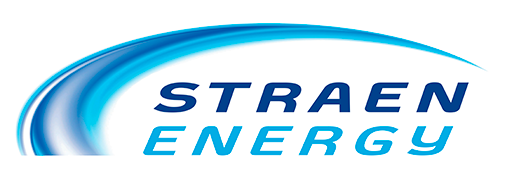CSU Development
Compact Gas Compression and Separation Unit – CSU
This section provides a summary of the most important development stages for the CSU concept.
REVISION 1, 30 bars wellhead pressure

Operational sequences
- Gas, oil and water come from the well stream and are fed into one of 4 cylindrical 1st stage separators (CCVs) of 5m3. The gas that is lighter than liquid will rise to the top.
- When the cylinder is filled with the well flow and the pressure is equalized against the well, the inlet (non-return) and outlet valves are closed. Water is pumped into the cylinder and gives a successively increasing gas pressure. At gas pressures > 150 bar, the non-return valve opens, and the gas is further directed to a scrubber and gas lift / export. The pressurized water together with produced oil / water are then drained to the second stage separator.
- Each cylinder alternates between filling from well stream, gas compression from pumped water or emptying after compression.
- Oil from the 2nd stage separator is pumped for export, while the water is reused to pressurizing the gas in the cylinders as needed. Excess water is pumped to water injection or to a separate purification unit before discharge. Gas from the 2nd stage separator is fed to an ejector which is driven by the water from the pump and reinjected into the CCVs.
- Compared to a conventional process, the gas is compressed by pumping high pressure water (150 bars) where the water also acts directly as a cooling medium. This eliminates the need for complex compressors and gas-cooling systems.
- The system is controlled by logical sequences and instruments to control and monitor pressures, levels and temperatures in the system.
- The system can initially be placed topside on a platform or vessel or built into suitable structures (for example, on low pressure Brownfield plants), or subsea. The plant is modularized to reduce foot print and weights.
Conclusions from the development phase
- Dynamic simulations in K-Spice have demonstrated the CSU’s suitability. The process is feasible and stable production is achieved.
- Low GOR ratio is most attractive, although GOR> 500 is resolved by system modifications.
- Gas flow rates and wellhead pressure determine the size of the CCVs, while oil and water production has no major influence on the design.
Advantages of the CSU system
- Exclusion of compressors
- Compression with improved efficiency and flexibility regarding pressure differential and flow rate
- Lower maintenance costs by
- Less equipment
- Simplified sealing solutions
- Compact design, smaller foot print
- Less weight
- Increased Process safety
- Fewer potential gas leakage points
- Pressure stage independent
- Compared to a factor of 3 – 5 between individual stages for a centrifugal compressor
- No lower limit for gas compression quantities
- Compared to centrifugal compressors, which need recirculation of gas by lower gas quantities
- Lower CAPEX i.e. cost savings in the order of 50 %; when comparing the CSU to the alternative use of a compact conventional centrifugal compressor unit
- Lower OPEX by isothermal compression and lower maintenance cost
- Candidate for top sides manned and unmanned platforms. May be further developed for subsea installation with suction anchor(s) from construction vessel in Hs 3.0 m sea state.
REVISION 02, 30 bars wellhead pressure
To avoid choking of the motive fluid (water) for sequential operations of the CCVs, an additional pump was introduced, reducing the energy consumption from 2.3 to 1.1 MW due to:
- No choking of water inlet valves
- Significantly reduced injection water demand
- Changed out one big by two smaller water injection pumps
- Slightly increased dimensions of internal piping

REVISION 03, 30 bars wellhead pressure
Changing the operation philosophy by introducing an extra separator and buffer tank gave extra advantages.

- Reduced energy consumption from 1.1 to 0.8 MW by gas inlet from 1st stage separator to CCVs
-
- Slightly reduced injection water demand
- Cleaner gas separation environment by using a closed liquid circuit
-
- No erosion to pumps/valves/sensors/instruments
- Reduced scaling
- Reduced corrosive gases
- Increased safety (reduced maintenance due to wear and tear)
The disadvantage is increased footprint acreage and cost.
REVISION 04, 70 bars wellhead pressure
A more complex solution due to higher wellhead pressure and stabilized oil at 3rd stage separator is required.

